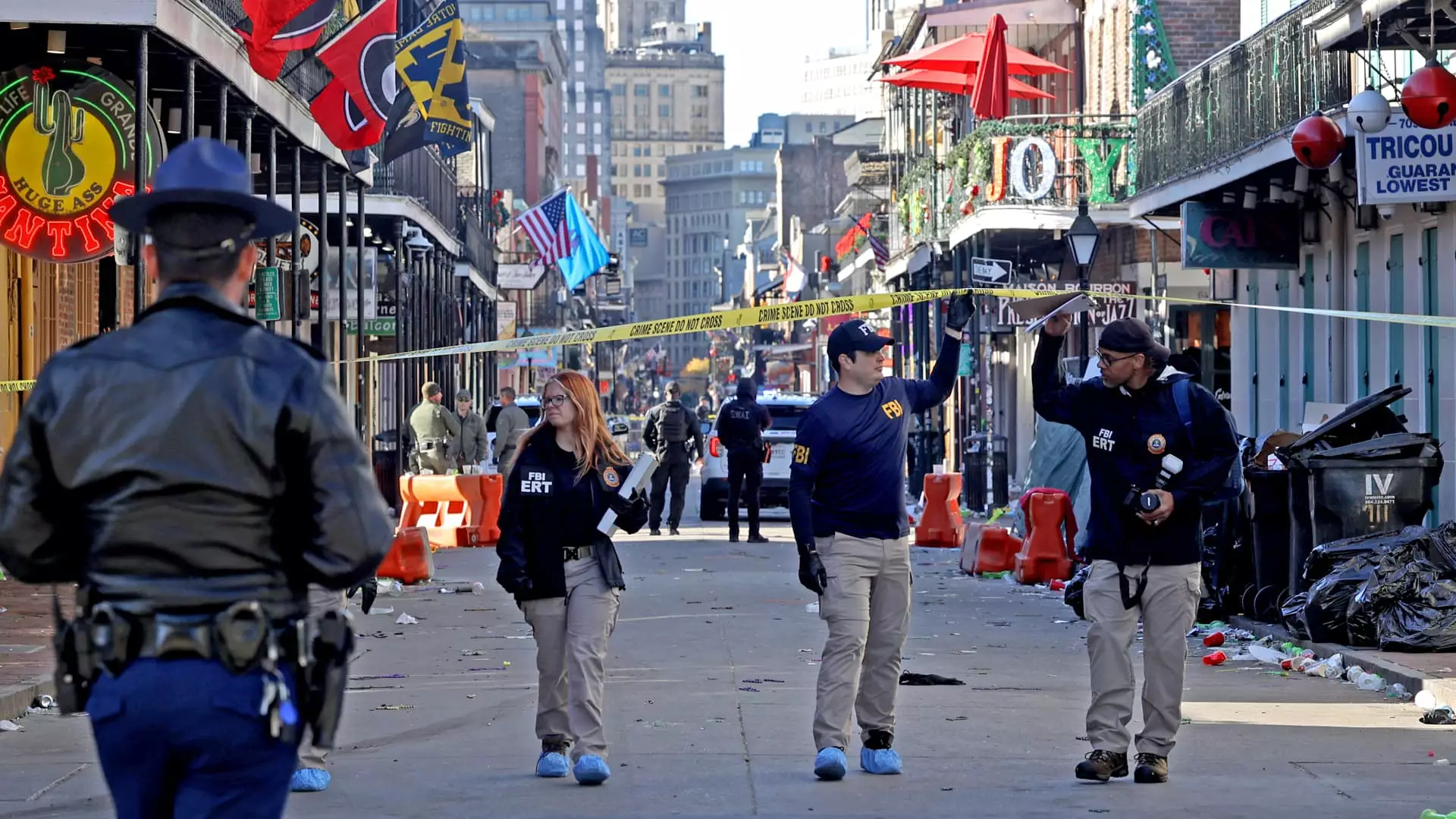The dawn of a new year is usually a time for joy and celebration, yet recent events in New Orleans and Las Vegas have uncovered a disturbing nexus of violence and potential military connections. This article delves into the ongoing investigations following these tragedies, exploring the broader implications of the incidents and the alarming questions they raise.
On January 1st, what began as a festive celebration on Bourbon Street ended in horror. Just before sunrise, a pick-up truck barreled into the crowd, leading to the death of 15 individuals and injuries to at least 30 others. Eyewitness accounts described a chaotic scene, overwhelming in its brutality, as emergency services rushed to attend to the victims. New Orleans Police Superintendent Anne Kirkpatrick characterized the event as a deliberate act aimed at maximizing casualties, an assertion that has echoed through discussions surrounding the incident.
The perpetrator, identified as Shamsud-Din Jabbar, is a 42-year-old Army veteran and U.S. national with a tangled background in military service. His military tenure spanned between 2006 and 2020, during which he served in roles related to human resources and information technology. Most troubling is his deployment to Afghanistan, raising questions regarding the psychological impact of military experience on civilian behavior.
Jabbar’s life ended in a fierce shootout with police, leaving many unanswered questions in the wake of his actions. Authorities continue to treat the event as a terrorist act, and the investigation has expanded to include connections with broader networks and related incidents, notably the Tesla Cybertruck explosion in Las Vegas.
Hours after the mayhem in New Orleans, an explosion rocked the external area of the Trump International Hotel in Las Vegas. This incident is under scrutiny for its potential ties to the earlier attack. Officials are probing commonalities regarding the vehicles involved, as authorities revealed that both were rented from the same service, Turo. This startling detail suggests a pattern which, if substantiated, could transform the investigation into a more extensive analysis of premeditated terror arrangements.
Moreover, the Las Vegas suspect, yet to be officially named, is believed to have a military background similar to Jabbar’s, further complicating the narrative. Investigators from the FBI and local law enforcement have stated they are keenly exploring the connections between the individuals involved, especially since military experience may signal specific capabilities or motivations behind such destructive behavior.
The involvement of high-profile figures such as Tesla CEO Elon Musk, who serves as a top adviser to President-elect Donald Trump, adds a layer of complexity to the incidents. Security protocols surrounding the institutions associated with them have intensified in light of the attacks, raising concerns about targeted violence against public figures in the future. President Biden has called for a thorough investigation led by law enforcement agencies and the intelligence community to discern any potential connections and prevent future tragedies.
The aftermath of these events has understandably left the nation grappling with fear and anxiety. As many mourn the victims of the New Orleans attack—laying flowers and holding vigils—questions arise about the effectiveness of public safety measures. New Orleans Mayor LaToya Cantrell cited ongoing construction of safety bollards intended to protect pedestrians, which were unfortunately not in place at the time of the attack.
Authorities are not only hunting for additional suspects but are also delving into how explosive devices may have been prepared in local accommodations, including the potential manufacture of an improvised explosive device (IED) linked to Jabbar’s attack. With explosive materials recovered from both the truck and surrounding areas, it is clear that the ramifications of this incident extend beyond sheer numbers; they touch upon systemic vulnerabilities in urban landscapes designed to protect citizens.
As investigations continue, it is imperative for lawmakers and authorities to reevaluate security policies and their implementation—particularly in high-traffic, high-risk zones. The tragic loss of life during what should have been a night of celebration begs for a reassessment of how emergencies are managed, keeping community well-being front and center. The intertwining narratives of these two deeply troubling incidents highlight an urgent need for greater vigilance, better preparation, and an overarching commitment to preventing future acts of violence.
In the weeks ahead, the hope remains that as new information surfaces, a clearer understanding of these events will emerge, steering the nation toward a safer and more secure environment. The analysis of these tragic occurrences may lead us toward some critical preventive measures, fostering resilience against the shadows of terror that loom over celebratory spaces.


Leave a Reply